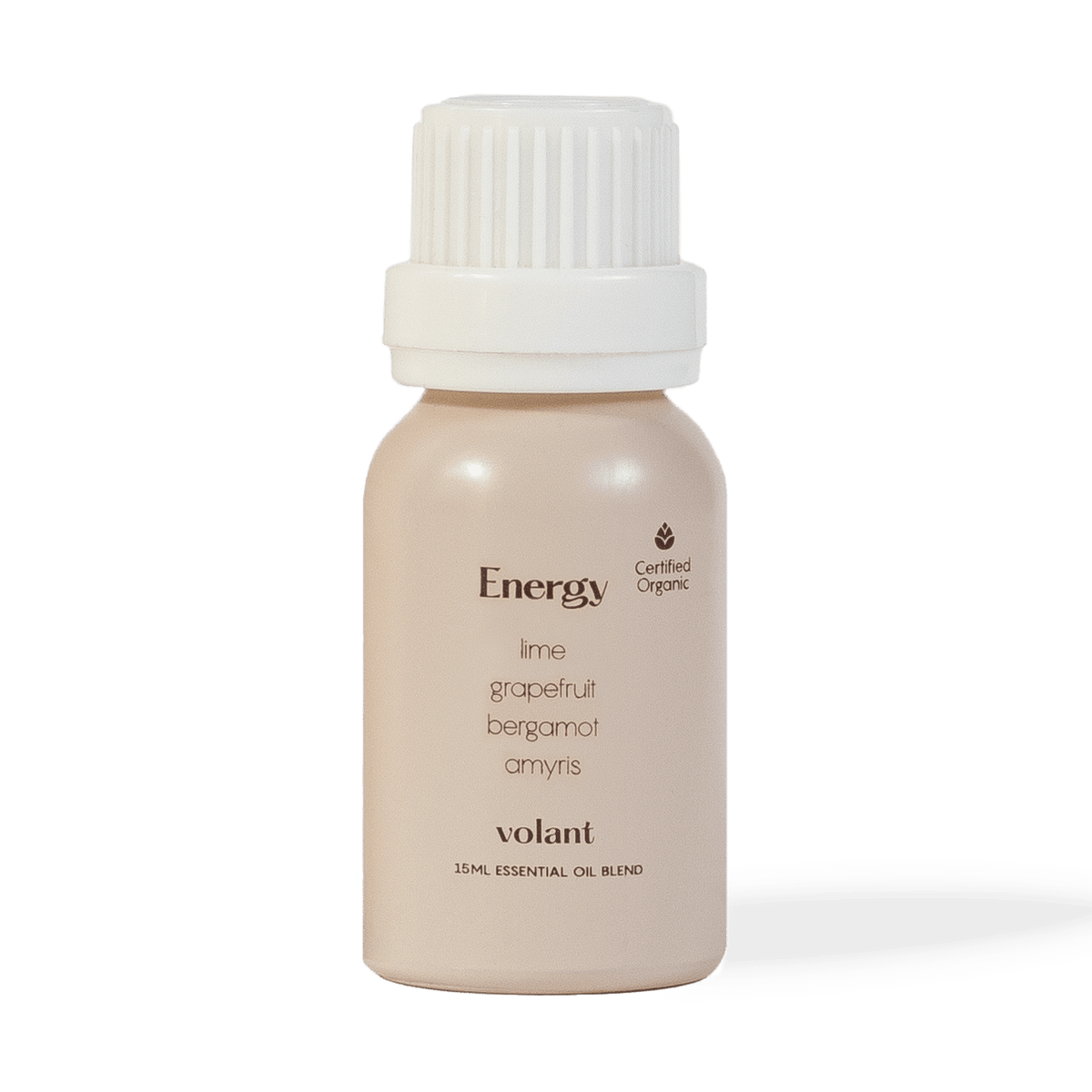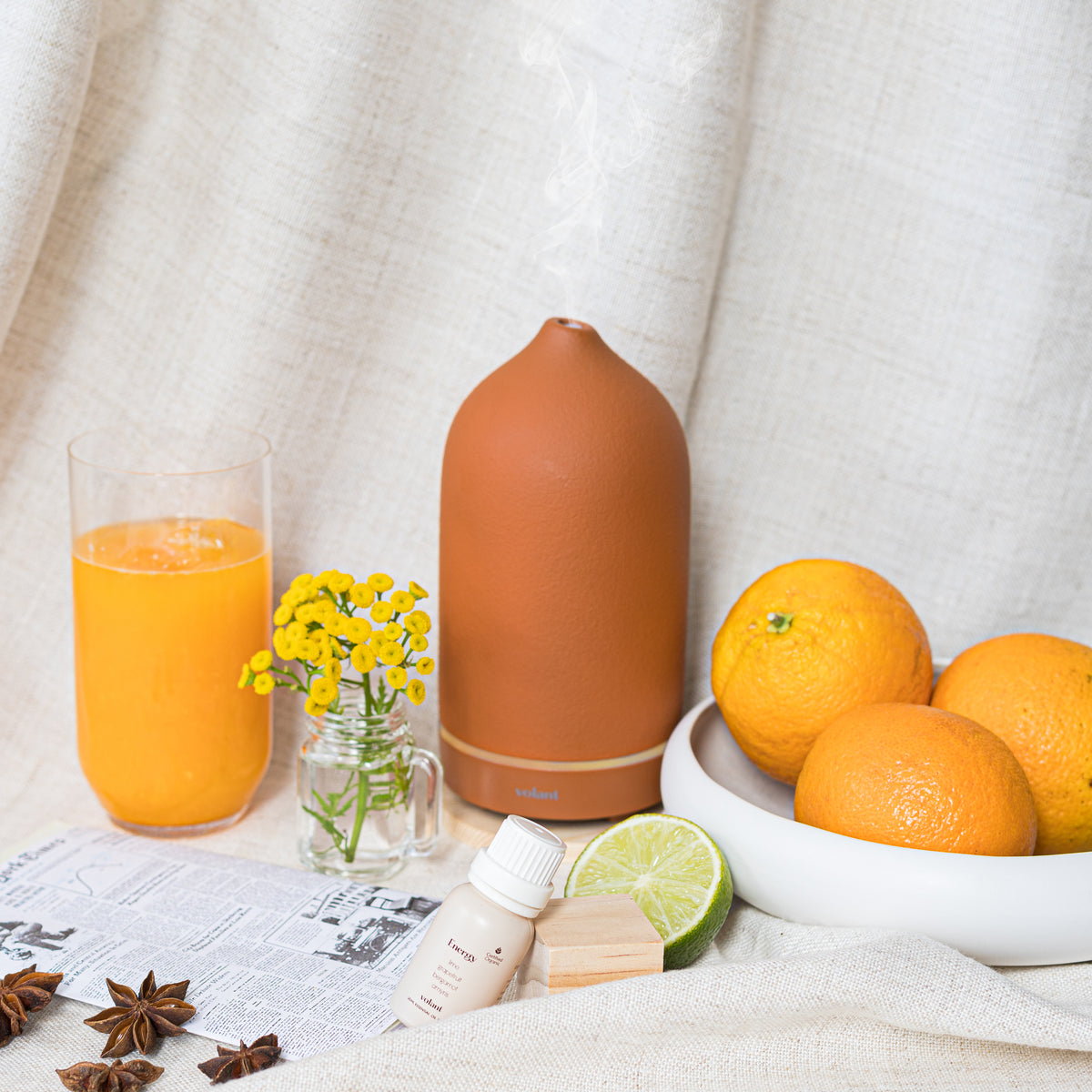Essential oils haven't changed much over the millennia, but the way in which they are diffused has.
The process of dispersing incredibly aromatic oils like Bergamot into the environment has developed over the centuries from simple to sophisticated. You don't need a qualification in chemistry or physics to understand how aromatherapy diffusers work.
You will find it helpful, though, to know the ins and outs of how each different type of essential oil diffuser works. Once you do, you'll be able to choose the right diffuser for the surroundings you want to use it in.
How different types of essential oil diffusers work
1. Evaporation
Evaporation is when warmth in the atmosphere causes moisture to turn into vapour. It's a mostly invisible process that occurs with everything from puddles after a rainstorm to the waters of the ocean as they're heated by the sun. Basic essential oil diffusers work the same way - by evaporation.

Reed diffusers
A common example of an essential oil diffuser that works by evaporation is a reed diffuser. You've undoubtedly seen them next to cans of air fresheners on a shelf in your local store - lots of thin sticks of porous wood in a small glass container of essential oil. Insert the sticks into the oil, and they'll start to soak it up. Heat in the room causes the oil that has seeped to the top of the sticks to evaporate and perfume the air.
As you might guess, the way a reed diffuser works is not a very controllable operation. The warmer the room, the faster the oil will evaporate. Have your central heating on full blast, and you'll soon discover there'll be nothing left but dry twigs and an empty bottle collecting dust because it no longer smells, and you've forgotten it's even there.
Evaporative diffusers
Although evaporative aromatherapy diffusers work by the same principle of evaporation, they're a little more technologically advanced. Contained in the base of the diffuser is a small battery or electric fan. The fan generates a gentle breeze inside the diffuser which blows through a pad you soak with essential oil. The movement of air through the pad causes the oil to evaporate. The main advantage of an evaporative essential oil diffuser.
Get energised
If you've procrastinated and left your reed diffuser or evaporative diffuser to dry out, try replenishing it with this essential oil.
With this wonderful aroma circulating your home or office, you'll soon begin to feel more awake, more efficient, and able to complete those mundane housekeeping tasks while singing the latest number one hit.
2. Heat Dissemination
One of the oldest methods used for dispersing the aroma of essential oils is heat. Yes, the essential oils do still evaporate, but the evaporation is caused by heat generated from a naked flame or heat source other than the environment and air.
Pottery diffusers
The way these essential oil heat diffusers work hasn't changed much since the times of the ancient Egyptians and Greeks who used them to burn Frankincense. Produced from glazed ceramics, this type of diffuser has a hollow interior where a candle or tealight can be inserted. They have decorative holes in the body to allow air to circulate and a small well-style dimple on the top surface to hold water and oil. When the candle is burning, it warms the oil and releases its scent. The only set-back with this antiquated method of diffusing aromatherapy oil is that you can't regulate the amount of heat reaching the oil - too little and there'll be no lovely aroma, or too much and it will damage the properties of the oil.
Electric aromatherapy diffusers
Modernity began to catch up with essential oil heat diffusers sometime after the convenient invention of electricity. Electrically operated essential oil diffusers contain a heating coil inside a waterproof casing. The casings can be either durable plastic or ceramic, but both will have a depression in which to place your preferred mix of oil and water or carrier oil. One good thing about how electric essential oil diffusers work is that the coil temperature is controlled by a thermostat to prevent overheating. Many models are also fitted with timers that will shut the heating process off automatically after a certain length of time.
3. Nebulisation
Simply explained, nebulisation is a process which turns liquids into microscopic droplets by combining them with air under pressure. Originally produced to aid with medical treatments for certain lung diseases, nebulisers are now used for many other purposes.
Aromatherapy nebulisers
The way an essential oil nebuliser works is similar to how an aerosol works but without the ozone-damaging CFCs used in spray cans. Yes, there is still heat involved in the process, though not in the same way as with heat dissemination diffusers you read about earlier. Aromatherapy nebulisers don't heat the oil; they heat the air in the base of the diffuser with a light or a coil. This causes the air to rise under pressure, gathering the essential oil along the way and turning it into a fine mist which is expelled at high speeds through the diffuser nozzle. As aromatherapy nebulising diffusers work without water or carrier oils, the essential oil emission into the atmosphere is undiluted. Yes, that does mean a more concentrated aroma, but it also means you'll find your stock of essential oil getting depleted fairly quickly if you use it frequently.
4. Ultrasonics
Ultrasonics sound pretty space age, don't they? Ultrasonics, or the energy produced by ultrasound vibrations, do have some pretty complex uses. You can't see them or hear them, but these amazing, high frequency sound waves can deliver a picture of a baby before it's born, disintegrate bacteria, and send a silent command to your dog, among a few hundred other uses. Bats and dolphins use ultrasonics to find their way around. But has all that got anything to do with how an ultrasonic aromatherapy diffuser works? Yes it does, and we'll let you in on the secret.
Ultrasonic diffusers
Ultrasonic essential oil diffusers, including the unique, handcrafted diffusers we make at Volant, use ultrasonic sound waves. How? A electrically powered vibrating plate in the base of the diffuser creates a continuous series of inaudible oscillations. These silent waves rise through the oil-impregnated water and atomise it to a finely scented vapour before dispersing it into the atmosphere. They're a stylish, effective and ecological method of enjoying the benefits of aromatherapy in your home or at work. We love our ultrasonic diffusers, and we are certain you will too.



